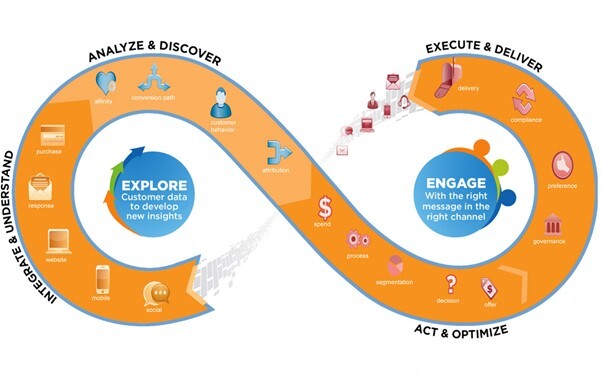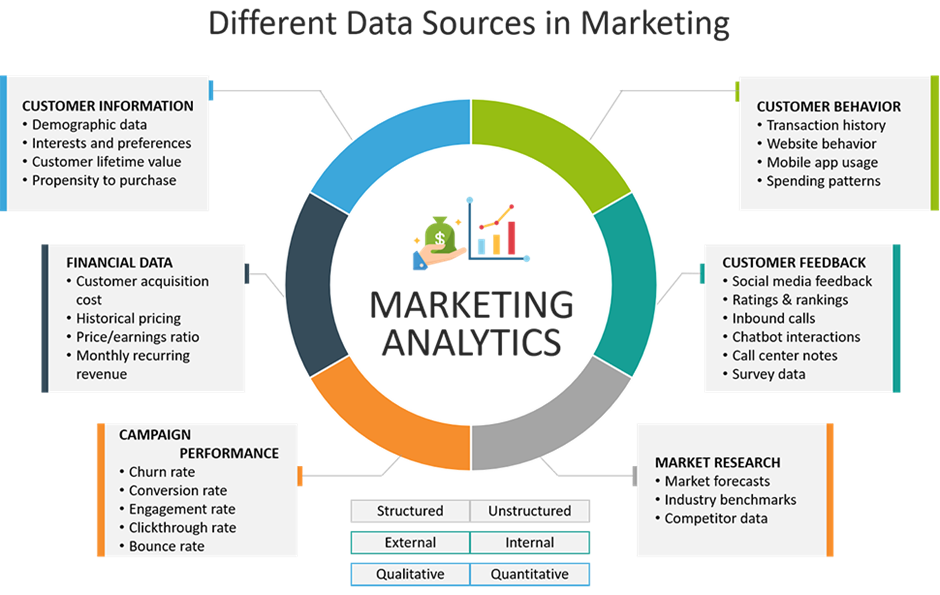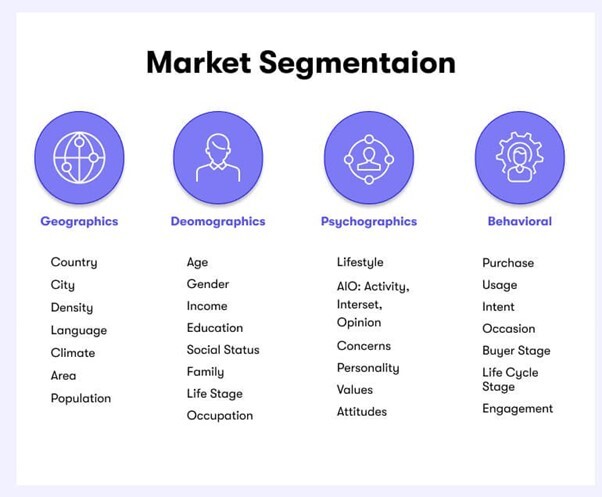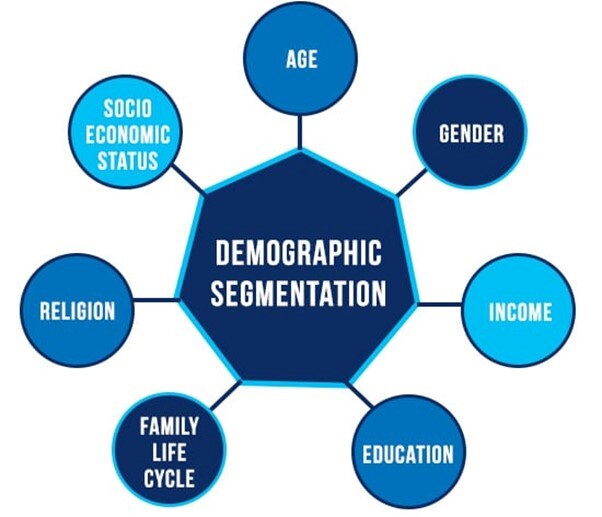Marketing data is one of the most powerful tools available to businesses and marketers today. It provides insights into consumer behavior, giving marketers a better understanding of their target audience and how to reach them. With access to reliable, up-to-date marketing data, businesses can make more informed decisions about which strategies to pursue and how to optimize their campaigns for maximum success.
Businesses striving to gain a competitive advantage, are turning to data-driven marketing to help them better understand their clients, target the right people, enable informed decision-making, and optimize their marketing strategies. As such, understanding and effectively utilizing marketing data is essential to success.
In this blog post, we'll explore some of the most important trends and strategies in marketing data and how businesses can use them to their advantage.
Introduction to B2B Marketing Data
Marketing data is a set of insights about customer behavior, industry trends, and more that can help businesses make informed decisions about their marketing efforts. With the right analysis of marketing data points, companies can identify areas of improvement and target their campaigns accordingly.

Additionally, leveraging B2B marketing data can help businesses optimize their SEO strategies and increase their visibility on search engines, resulting in more website traffic. Furthermore, understanding the target audience through marketing data can help create impactful campaigns that yield better results. By utilizing data effectively, businesses can stay one step ahead of their competition and maximize their success.
For example, marketing data Kaggle is a platform that enables users to access and analyze marketing datasets generated from marketing data sources. It provides access to a variety of marketing data sets, including financials, sales, customer segmentation, demographics, and more. It also allows users to easily compare and contrast different marketing data sets and explore correlations between them. Additionally, users can also use the platform to build predictive models and use machine learning techniques to better understand their marketing data.
Role of Marketing Data in Lead Generation
The role of marketing data in B2B lead generation cannot be understated. By leveraging data, marketers can identify key areas in which they can target potential clients, allowing them to create more effective campaigns and better reach their desired audience. With the right data-driven insights, marketers can focus their efforts on campaigns that are more likely to convert, improving their overall return on investment.

Data-driven insights can be used to create effective account-based marketing campaigns besides targeted email marketing campaigns, social media campaigns, and content marketing campaigns. Using data, marketers can identify which type of content resonates best with their target audience, allowing them to create campaigns that are tailored to their specific needs. Additionally, data can help marketers understand the various stages of the buyer’s journey, allowing them to create campaigns that convert better and generate more leads.
Data-driven insights can also help marketers track the performance of their campaigns, allowing them to identify which campaigns are performing better and which need to be adjusted. This helps marketers ensure that their campaigns are always reaching their desired audience and achieving the desired results. Additionally, data can be used to gain valuable insights into customer behavior, helping marketers better understand their target audience and tailor their campaigns accordingly.
Finally, data can be used to create more effective lead-nurturing strategies. By leveraging data, marketers can identify how their leads interact with their content and which types of content are more likely to lead to conversions. This helps marketers create campaigns that drive multi-channel communications between you and the prospect.
Marketing data plays an important role in lead generation for businesses of all sizes. With the right data, businesses can target customers more effectively, increasing conversion rates. By leveraging marketing data, businesses can gain a better understanding of who their target customers are, and what kind of content(ToFu, MoFu, BoFu) they respond to at each stage of the sales funnel.

Additionally, businesses can also use marketing data to create personalized campaigns and optimize their ad spending with programmatic advertising, allowing them to maximize their ROI. With the right data, businesses can create data-driven strategies that lead to higher conversion rates and better customer engagement.
How Marketing Data can be Used?
Marketing data can be used for identifying and understanding target clients by gathering information about the types of people that are most likely to be interested in a product or service. The first-party data can be gathered from online surveys, social media analytics, downloadable whitepapers, and other sources. With this information, businesses can create targeted campaigns that speak specifically to the interests of their target customers.

For example, a company selling sports equipment may analyze its website analytics to understand which visitors come from sports-related websites, allowing them to create ads specifically tailored to those viewers. Additionally, social media analytics can provide valuable insight into which topics and hashtags are most popular among users in a target demographic, allowing businesses to craft content that resonates with their target customers. With the right data, businesses can create content, campaigns, and products that are tailored to their target customers and have a greater chance of success.
Ways to use Marketing Data to Tailor Marketing Messages and Customer Segmentation
Data-driven marketing is one of the most powerful ways of customer acquisition. By segmenting customers based on their buying behavior, interests, demographics, and more, marketers can tailor their messaging in order to reach the right audience and create more effective campaigns. With the help of marketing data and analytics, marketers can also craft more targeted and personalized messages, which can result in improved engagement and customer loyalty.

In addition, data-driven marketing can help marketers optimize the timing and placement of their messages for maximum impact. By leveraging marketing data and customer segmentation, marketers can maximize the effectiveness of their campaigns and achieve greater success.
Importance of Using Data to Track and Measure the Success of Lead Generation Efforts
Having identified the success of lead generation efforts, the next step is to focus on how to utilize the data generated from the efforts to improve marketing campaigns. By analyzing the data, marketers can gain insight into what strategies are working and which are not. This can be used to create more targeted campaigns that are more likely to generate leads.
Additionally, by understanding the data better, marketers can more effectively achieve campaign optimization to ensure they reach the right audience and maximize their return on investment.
7 Types of Marketing Data for Powerful Lead Generation
There are many different types of marketing data out there and each type can be used to generate leads in different ways. Some of the most commonly used types of marketing data for powerful lead generation include demographic data, customer data, market research, website analytics, social media analytics, email analytics, and search engine optimization (SEO) data. By leveraging the right combination of marketing data sources with the buyer's persona, businesses can create targeted campaigns that drive more leads and generate more sales.
1. Demographic Data
Demographic data is incredibly important when it comes to marketing. It allows marketers to gain insight into their target market, so they can tailor their marketing strategies to better reach their intended audience. Knowing who their target customer is can help marketers create more effective campaigns and products. Additionally, demographic data can help marketers understand consumer behaviors, preferences, and trends. This can help them better understand their target customers and make informed decisions about their marketing strategies.
When it comes to using demographic data for marketing, it is important to consider the different types of data available. This includes age, gender, marital status, education, occupation, income, and ethnicity. By gathering this data, marketers can learn more about who their target customer is and how best to reach them. For example, if a company is targeting young adults, it might use data on education and income to better understand its target group. Additionally, marketers can use data on occupation, marital status, and ethnicity to learn more about their target audience's lifestyle and preferences.

Demographic data is a key component of marketing data that can help inform and guide marketing strategies. It can provide insight into the target audience, the size of the market, and the preferences of the target audience. Demographic data can also be used to assess the effectiveness of marketing campaigns and the return on investment of marketing efforts.
It can also help identify potential customer segments and trends in customer behavior. Additionally, demographic data can be used to target ads and content for specific audiences. Knowing who your target audience is will allow marketers to tailor their strategies to meet their needs and preferences.
2. Firmographic Data
Firmographic data is incredibly useful for marketers because it provides an in-depth look at companies and their characteristics, such as industry, size, location, and more. This type of data can help marketers create more targeted campaigns and tailor messaging to specific industries. It can also give marketers insight into what kind of content and messaging resonates with different types of organizations. By leveraging firmographic data, marketers can create more effective campaigns and ultimately boost their ROI.
For SEO-focused marketing, firmographic data can provide a clearer understanding of the type of clients an SEO-focused marketing campaign should target. By better understanding the type of client an SEO-focused campaign should target, businesses can create more effective SEO-focused campaigns, leading to better rankings, more organic traffic, and more productive interactions resulting in more conversions.
Additionally, firmographic data, assist businesses in the development of content that is tailored to the interests of their target customers. This can help ensure that search engine users land on the most relevant and high-quality content, leading to higher rankings, more organic traffic, and more conversions.
3. Technographic Data
Technographic data is an important part of marketing data and can help marketers better target their audience. Technographic data provides insights into technology usage and adoption, allowing marketers to better understand the technology landscape and how customers interact with technology. This data can be used to identify trends in technology adoption, develop marketing campaigns that target specific technologies, and identify potential opportunities to capitalize on emerging technology trends. By leveraging technographic data, marketers can more effectively reach their target audiences and drive more relevant, timely, and effective campaigns.
Additionally, by leveraging this data, companies can gain better insights into their target audience's behaviors, preferences, and interests. This knowledge can be used in the development of effective content, optimizing website design and structure, and attracting the right kinds of visitors.
Finally, having access to technographic data such as installed hardware, network, firewall, and applications in a company marketers identify emerging trends and anticipate customer needs more effectively. By leveraging this data, marketers can ensure that their campaigns are better aligned with their target audience's needs and interests, resulting in more successful SEO-focused campaigns.
4. Chronographic Data
Chronographic data is a powerful tool for marketing professionals and SEO specialists. It provides an efficient way to track website performance and keep track of trends in the industry. This data can be used to analyze how quickly content is being consumed or to determine the optimal time for releasing new content. Chronographic data also helps identify areas for improvement and can be used to test different strategies for optimizing search engine rankings. This data can help marketers better target their audience, boost their visibility, and increase their ROI. Chronographic data is an essential part of marketing data as it can help marketing professionals understand customer behavior over time, build relationships and measure the success of their campaigns.
It also helps marketers track customer sentiment and identify trends in the market. For example, marketers can look at how customer sentiment changes over a certain period of time, such as a month or a year. This can help marketers adjust their strategies accordingly and measure their success more accurately. With chronographic data, marketers can better target their campaigns and make more informed decisions.
5. Quantitative Data
Quantitative data is an invaluable tool for marketers when it comes to understanding their target audiences and the success of their marketing campaigns. It can provide detailed information about the number of visitors to a website, the amount of time spent on specific pages, and the number of conversions from visitors to paying customers.
With this data, marketers can track the performance of their campaigns, identify areas of improvement, and adjust their strategies accordingly. Additionally, quantitative data can also be used to measure the effectiveness of a website’s search engine optimization (SEO) efforts, providing insight into which keywords and phrases are driving the most traffic to the website. By leveraging quantitative data, marketers can gain a better understanding of their target audience and the success of their marketing campaigns.
Quantitative data is data that is based on numeric values which can be measured, counted, and compared. It is often used to analyze trends and calculate statistics, and it is highly valued in the marketing world. For example, quantitative data can provide insights into website traffic, customer demographics, and customer preferences. It can also be used to measure the effectiveness of marketing campaigns and measure the impact of any changes made to a website or product.
Quantitative data is also used to understand the buyer's journey and inform decisions related to future marketing campaigns. By analyzing quantitative data, marketers can determine which strategies are working and which need to be adjusted. This helps them make more informed decisions, which leads to better results and increased ROI.
6. Qualitative Data
Qualitative data is an important tool for marketers. It helps them understand customer behavior, motivations, and preferences. By collecting qualitative data, marketers can gain insights about their target audience that can be used to create more effective campaigns. Additionally, qualitative data can be used to measure the success of campaigns, as well as to assess the overall effectiveness of marketing efforts. With the right qualitative data, marketers can gain an invaluable understanding of their target audience and create campaigns that are sure to resonate with them.
Qualitative data can also be useful in SEO-focused marketing data. Qualitative data provides insights into customer sentiment, opinions, and behavior, which can be useful for understanding the impact of SEO on content, as well as the overall effectiveness of marketing campaigns. It can also be used to identify areas of improvement and help marketers better understand their target audience and the way they interact with content. Qualitative data can be collected through surveys, interviews, focus groups, and other forms of market research. By collecting and analyzing qualitative data, marketers can gain valuable insights into optimizing their SEO strategies and better understand how to effectively reach their target audience.
7. Intent Data
Intent data is an incredibly powerful tool that marketers can use to not only assess the performance of current campaigns but also to craft new strategies and campaigns. This data can provide marketers with insight into what content resonates with their target audiences, as well as which channels are the most effective for reaching them via appointment-setting processes.
By utilizing Intent Data, marketers can gain insight into consumer interests, buying patterns, and purchase intent. This data can be used to create targeted campaigns that better engage potential customers, create more effective advertising, and even influence customer decisions.
Additionally, Intent Data can help marketers identify potential client segments and build more targeted client profiles. It can also be used to develop targeted content, optimize marketing spend, and improve overall customer experience. When used in conjunction with other marketing data sources, Intent Data can be a powerful tool for marketers to reach their customers.
Marketers can use this information to customize their messaging and content to better meet the needs of their target audience. Additionally, intent data can be used to optimize campaigns and ensure that the right message is being sent to the right people. By leveraging intent data, marketers can ensure their campaigns are reaching the right people at the right time, leading to more successful campaigns and better ROI.
Conclusion
In conclusion, S2W Media's powerful data capabilities can help businesses unlock new opportunities that are often hidden in the data. With their AI-driven data analysis, businesses can quickly and accurately identify key customer trends and insights to help drive better customer engagement and conversion rates. Additionally, businesses can also leverage S2W Media's capabilities to gain a better understanding of their customers' search behavior and optimize their marketing strategies for maximum impact. By leveraging S2W Media's data capabilities, businesses can better understand customer needs and behaviors, target high-quality leads, and generate more business and convert leads.



